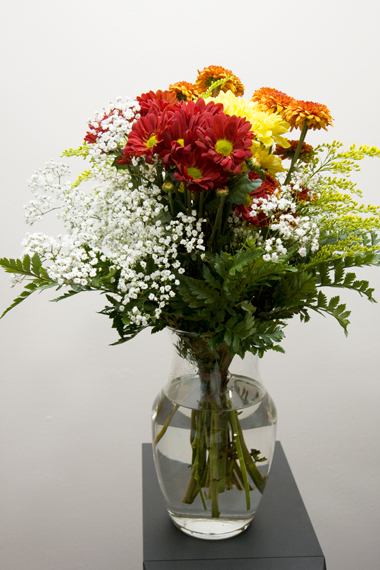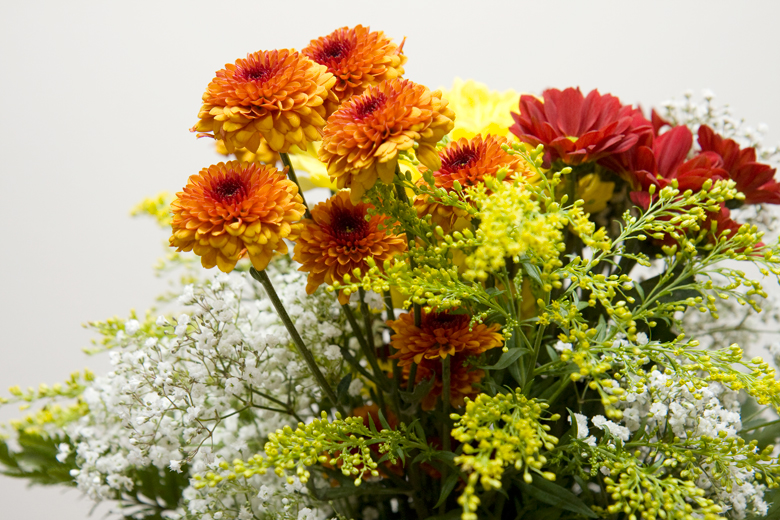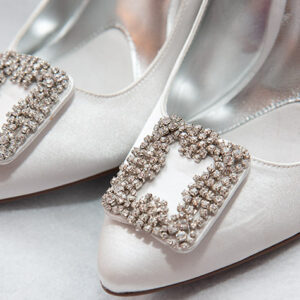Hi everyone! Here’s the latest chapter from my floral arranging adventures.
Professional floral arrangements come in many shapes and sizes. There is always a plan for the design and this concept shines through in the final shape of the arrangement. Without a plan, the finished product is a mishmash, rather than a controlled design.

There are 11 basic arrangement shapes that professional floral artists should be qualified to create. They are:
1) Symmetrical: When creating a symmetrical design, there must be equal visual balance apparent on either side of the central axis. If there were an imaginary line running from top to bottom through the center of the design, it would visually divide this type of arrangement into two equally balanced parts.
2) Round: All of the flowers and greens in this arrangement fall within the circumference of a circle, thus creating a round shaped design.
3) Asymmetrical: In an asymmetrical design, the central axis moves to the right or left of center. This type of arrangement resembles a right angle. The height of the design meets with the length to form a right angle.
4) Fan: In a fan design, the flowers are placed to form a semicircular shape, with all of the stems flowing into a central focal axis.
5) Oval: The typical oval arrangement is made with a primary flower to define the oval shape and other flowers and greens are used as fillers.
6) Vertical: This distinctive design shape emphasizes height. All of the materials used should be contained within the width of the container.
7) Horizontal: The horizontal line creates a pleasing arc shape, therefore it’s important to keep the arrangement low and ideally quite narrow to reinforce the horizontal impact of the composition.
8) Parallel Systems: A parallel systems arrangement is created by using two or more vertical designs in the same composition. There should be “air” between each parallel grouping of flowers. Sometimes the vertical groupings blend together, but usually the stems are separated into 2-3 zones.
9) Hogarth Curve: The interesting shape of this arrangement forms an “s” curve. A taller, cylindrical container is ideal for the Hogarth curve as it displays the full beauty of its shape. One important technique in creating the Hogarth is to extend the arrangement foam above the container, so that flowers can be inserted properly for the bottom part of the “s” curve.
10) Crescent: The crescent is one of the most difficult shapes to construct because it requires that flowers and greens are carefully shaped to form the crescent curve. Sometimes, materials can be shaped naturally into a crescent line, other times wiring is necessary. Branches, twigs, and bare grass are sometimes used in these arrangements.
11) Rectangular: This is a contemporary arrangement shape. The rectangular design is properly constructed when all flowers and materials fall within the line of an imaginary rectangle. It’s sometimes used in landscaping designs.
Once these basic forms have been mastered, modifications and creative license can be taken to create more contemporary designs.
Here is a bouquet that I created in our latest class. I’ll be describing how to make a bouquet in a future post. Check back soon to learn 2 different bouquet-making techniques.

Hope you enjoyed this newest lesson.
Until next time, here’s a kiss and a smile! 🙂


